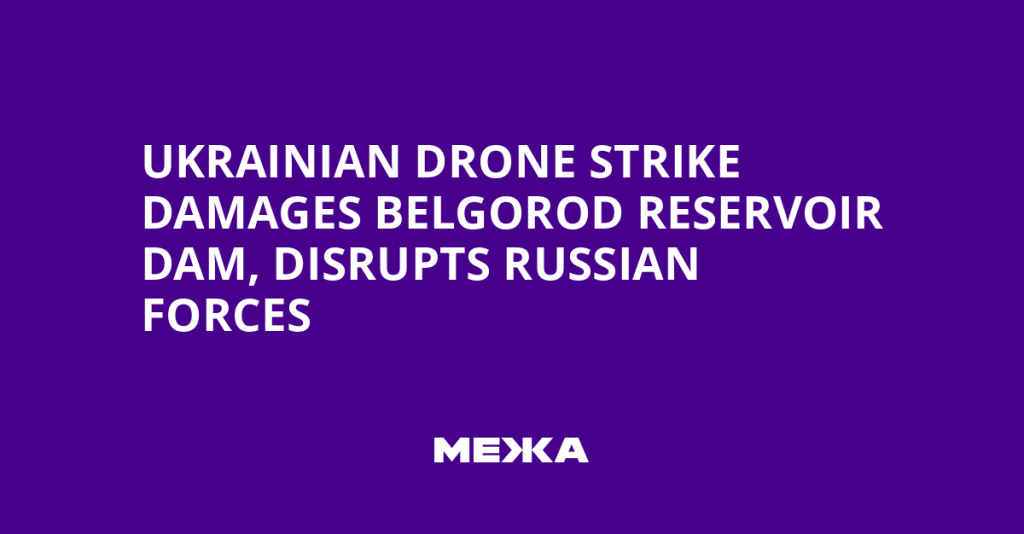Unmanned Forces Strike: Ukraine’s Bold Move on the Belgorod Reservoir
The conflict between Ukraine and Russia has seen numerous developments in tactics, strategies, and technologies. One recent event, shared by Robert “Madjar” Brovdi, the Commander of the Ukrainian Armed Forces’ Unmanned Systems Forces, underscores the increasingly significant role of drones in modern warfare.
The Operation at the Belgorod Reservoir
Brovdi confirmed that operatives from the 1st Separate Center of Unmanned Systems Forces executed a precise strike on the dam of the Belgorod Reservoir. This mission, dubbed “Dam, hang on if anything!”, showcased the tactical advantage that unmanned systems have brought to the battlefield. Through a Facebook post, Brovdi illustrated the effectiveness of their operations, stating, “The Belgorod Reservoir today cracked. Since the moment of the magical nudge, the water level has fallen by 100 cm.”
This operation highlights a strategic use of drones, not solely for reconnaissance or surveillance but as direct tools of disruption, impacting infrastructure critical to military logistics and regional stability.
Implications for Russian Forces
The consequences of this strike were felt immediately. Brovdi reported that Russian troops in the Grafivka area found their comfort disrupted; their dugouts were now under threat. He amusingly noted that locals were celebrating, saying, “Now we have channels, not trenches!” This statement reflects both the tactical success of the operation and the morale boost for Ukrainian civilians observing the impacts on enemy operations.
The night of October 25 marked a pivotal moment, with reports indicating that the Belgorod dam was damaged, resulting in an unexpected rise in the water level of the Seversky Donets River. This flooding created dire challenges for Russian military units stationed in the Vovchansk direction, potentially isolating them from main forces.
Tactical Maneuvers and Outcomes
In a follow-up announcement from the 16th Army Corps of the Ukrainian Armed Forces, it was confirmed that following the strike, the dam began releasing significant volumes of water. This tactical move effectively cut off the Russian units that had previously crossed the Seversky Donets, demonstrating the operational efficiency of Ukraine’s unmanned systems.
This action not only exemplifies the tactical ingenuity of the Ukrainian forces but also raises questions about the use of drones in warfare. The ability to disrupt enemy supply lines and command structure through precise strikes could reshape how military conflicts are conducted in the future.
Legal Consequences and Responses
As the situation unfolds, discussions surrounding the legal implications of such military strategies have arisen. The National Police of Ukraine has indicated that the actions performed could be viewed under specific criminal offenses, particularly under Articles 345 and 194 of the Ukrainian Criminal Code, which address threats or violence against law enforcement and deliberate destruction of property.
This underscores the dual nature of warfare today—where military engagements are not only fought on the battlefield but also scrutinized under legal frameworks. The integration of unmanned systems in these contexts complicates traditional definitions of combat and accountability.
A Changing Battlefield
As we examine these developments, it becomes clear that the battlefield is evolving. The effective use of drones by Ukrainian forces demonstrates a shift toward technology-driven warfare, where traditional military tactics are supplemented or even replaced by unmanned strategies.
The future of combat is likely to involve a greater reliance on unmanned systems, given their ability to perform high-risk tasks with reduced exposure for personnel. Observers are left to consider not only the immediate tactical implications but also the broader strategic shifts this heralds in international conflicts.

